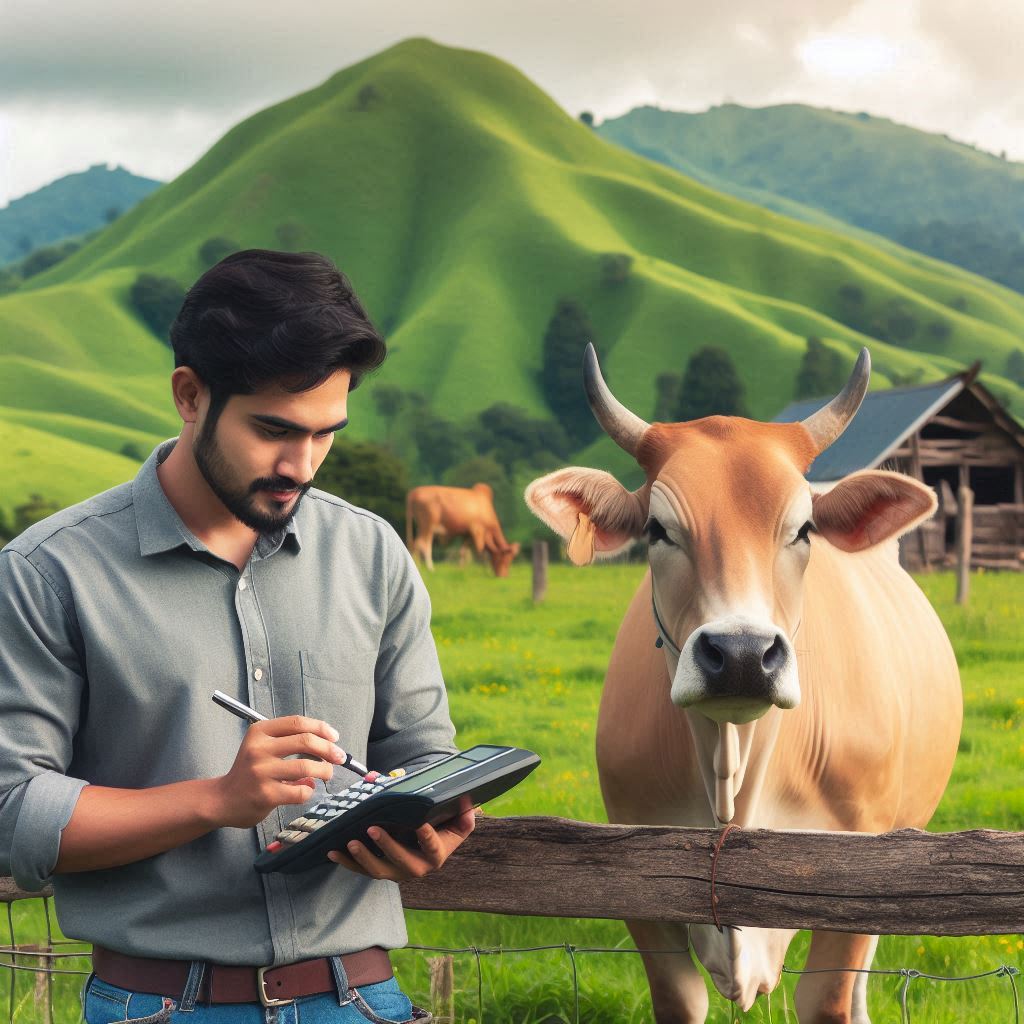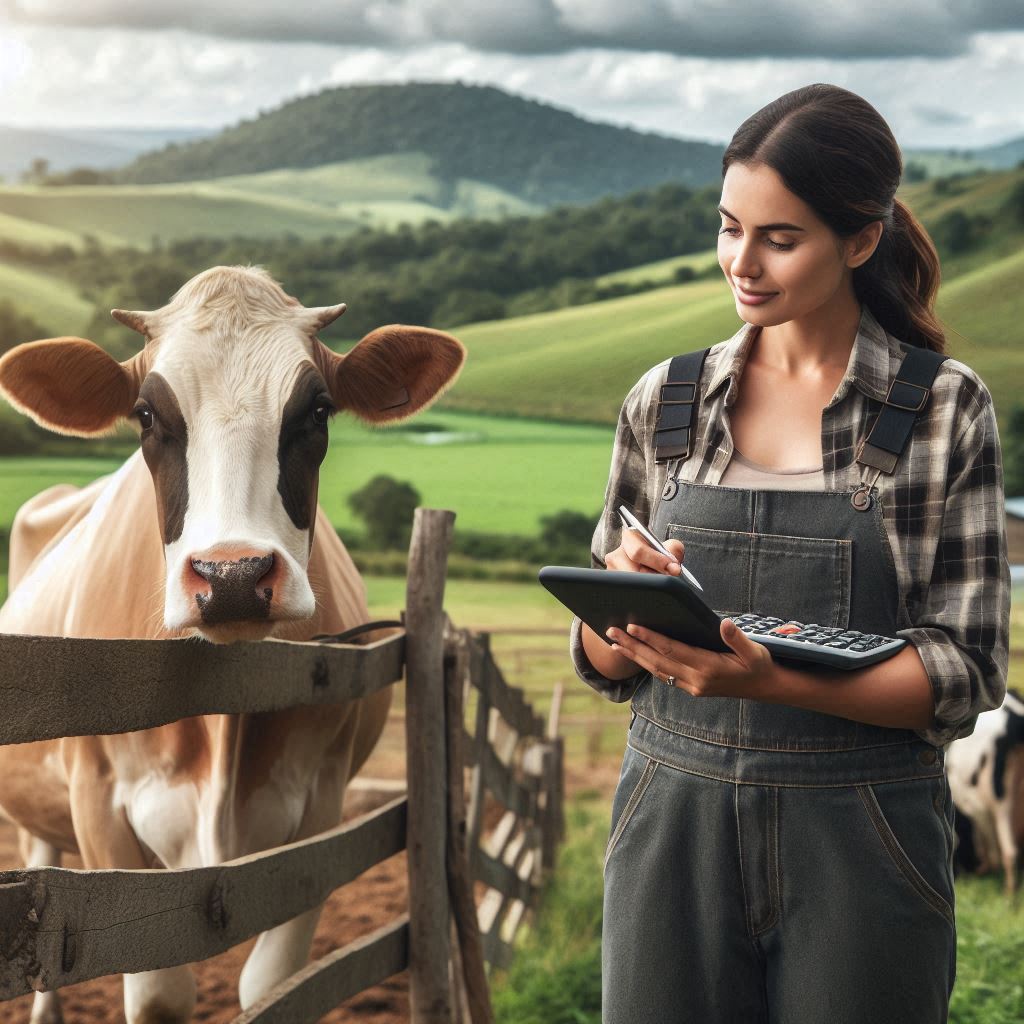Buying a cow is a significant investment for those interested in livestock farming, whether for meat production, dairy, or as a companion animal. The cost of a cow can vary widely based on several factors, including breed, age, gender, health, registration type, market conditions and purpose of the cow (e.g., dairy, beef, breeding). In this comprehensive guide, we’ll break down the costs of buying a cow by breed, providing insights into the price range and considerations for each breed.
Post Contents
- Factors Affecting the Cost of a Cow
- Now, let’s explore the cost of buying cows by breed:
- 1. Angus
- 2. Holstein
- 3. Hereford
- 4. Simmental
- 5. Limousin
- 6. Charolais
- 7. Red Angus
- 8. Texas Longhorn
- 9. Jersey
- 10. Brahman
- 11. Gelbvieh
- 12. Shorthorn
- 13. Ayrshire
- 14. Scottish Highland
- 15. Dexter
- 16. Miniature Zebu
- 17. Highland Belted Galloway
- 18. Santa Gertrudis
- 19. Piedmontese
- 20. Miniature Hereford
- Additional Costs to Consider
- Summary
Factors Affecting the Cost of a Cow
Before delving into breed-specific prices, it’s essential to understand the various factors that influence the cost of a cow:
- Breed: Different cattle breeds have distinct price ranges based on their intended purpose and market demand.
- Age: The age of the cow significantly impacts its price. Calves are generally less expensive than mature cows.
- Gender: Heifers (female cows that haven’t calved yet) and steers (castrated males) may have different price points than intact bulls or cows.
- Health: A healthy cow with up-to-date vaccinations and no medical issues will command a higher price.
- Market Conditions: Prices can fluctuate due to supply and demand, economic factors, and regional variations.
- Purpose: Cows bred for meat or dairy production may have different price ranges.
- Registration: Registered or pedigree cattle often come with higher price tags due to their lineage and potential for breeding.
Now, let’s explore the cost of buying cows by breed:

1. Angus
Angus cattle are known for their excellent meat quality and marbling. They are a popular choice for beef production. The cost of an Angus calf typically ranges from $1,000 to $2,500, depending on age and gender. Older, bred Angus cows can cost between $1,500 and $3,500.
2. Holstein
Holsteins are primarily dairy cattle, recognized by their distinctive black-and-white markings. Calves can be more affordable, ranging from $200 to $500. However, high-quality registered Holstein heifers may cost between $1,200 and $2,500.
3. Hereford
Hereford cattle are known for their red body color with a white face, chest, and underline. They are a dual-purpose breed, suitable for both meat and dairy. Hereford calves can range from $800 to $2,000, with bred cows priced between $1,200 and $2,500.
4. Simmental
Simmental cattle are versatile and used for both beef and dairy production. Simmental calves can cost between $1,000 and $2,500, while bred cows may range from $1,500 to $3,000.
5. Limousin
Limousin cattle are known for their lean meat and high feed efficiency. Calves typically range from $1,000 to $2,500, with bred cows priced between $1,500 and $3,000.
6. Charolais
Charolais cattle are large, muscular animals known for their meat quality. Calves can cost between $1,000 and $2,500, while bred cows may range from $1,500 to $3,500.
7. Red Angus
Red Angus cattle share many traits with their black counterparts, including meat quality. Red Angus calves can range from $1,000 to $2,500, and bred cows may be priced between $1,500 and $3,500.
8. Texas Longhorn
Known for their distinctive long horns, Texas Longhorns are hardy and often used for beef production. Calves can range from $800 to $1,500, while older cows may cost between $1,000 and $2,000.
9. Jersey
Jerseys are a popular dairy breed, known for their high butterfat milk. Calves can cost between $800 and $1,500. Registered Jersey heifers may be priced from $1,500 to $3,000.
10. Brahman
Brahman cattle are known for their heat tolerance and adaptability. Calves can range from $1,000 to $2,500, with bred cows priced between $1,500 and $3,500.
11. Gelbvieh
Gelbvieh cattle are a dual-purpose breed, suitable for both meat and dairy. Gelbvieh calves typically range from $1,000 to $2,500, with bred cows priced between $1,500 and $3,000.
12. Shorthorn
Shorthorn cattle are a versatile breed used in both meat and dairy production. Shorthorn calves can cost between $800 and $2,000, while bred cows may range from $1,200 to $2,500.
13. Ayrshire
Ayrshire cattle are a dairy breed known for their medium-sized build and reddish-brown and white markings. Ayrshire calves may range from $800 to $1,500. Registered heifers can cost between $1,200 and $2,500.
14. Scottish Highland
Scottish Highland cattle are hardy and adaptable to harsh climates. Calves can cost between $800 and $1,500, with bred cows priced between $1,200 and $2,500.
15. Dexter
Dexter cattle are a small, dual-purpose breed suitable for small farms. Calves can range from $800 to $1,500, with bred cows priced between $1,200 and $2,500.
16. Miniature Zebu
Miniature Zebu cattle are a pint-sized breed often kept as pets or for small-scale milk production. Prices can vary widely but generally range from $500 to $2,000, depending on age and quality.
17. Highland Belted Galloway
Highland Belted Galloway cattle are known for their distinctive white belts and hardiness. Calves can cost between $800 and $1,500, with bred cows priced between $1,200 and $2,500.
18. Santa Gertrudis
Santa Gertrudis cattle are a tropical breed known for their heat tolerance. Calves may range from $1,000 to $2,500, with bred cows priced between $1,500 and $3,500.
19. Piedmontese
Piedmontese cattle are known for their lean meat and double-muscled appearance. Calves typically range from $1,000 to $2,500, with bred cows priced between $1,500 and $3,000.
20. Miniature Hereford
Miniature Hereford cattle are a smaller version of the standard Hereford breed. Calves can cost between $800 and $1,500, while older cows may range from $1,000 to $2,000.
Additional Costs to Consider
When buying a cow, it’s essential to factor in additional costs beyond the purchase price. These costs may include:
1. Transportation: Expenses associated with transporting the cow to your property or farm.
2. Housing: Costs for constructing or maintaining suitable shelter and fencing for the cow.
3. Feeding: Expenses for providing proper nutrition and feed for the cow, including hay, grains, and supplements.
4. Veterinary Care: Budget for routine health check-ups, vaccinations, and potential medical expenses.
5. Breeding Costs: If you plan to breed your cow, consider the costs associated with breeding, including artificial insemination or bull maintenance.
6. Insurance: Consider insuring your cow for potential losses due to accidents, illnesses, or theft.
7. Labor: Account for the time and effort required for daily care and maintenance of your cow.
Summary
The cost of buying a cow varies significantly based on factors such as breed, age, sex, and market conditions. It’s essential to do thorough research, assess your specific needs, and budget for both the initial purchase price and ongoing expenses. Whether you’re investing in cattle for meat production, dairy farming, or breeding, understanding the breed-wise pricing guide and additional costs will help you make informed decisions and ensure the financial sustainability of your cattle venture.
Please note that these price ranges are approximate and can vary based on individual sellers, geographic location, and specific circumstances. Additionally, expenses related to transportation, feeding, shelter, and healthcare should be factored into the overall cost of owning a cow. It’s crucial to research thoroughly, inspect

94% of pet owners say their animal pal makes them smile more than once a day. In 2007, I realized that I was made for saving Animals. My father is a Vet, and I think every pet deserves one. I started this blog, “InPetCare”, in 2019 with my father to enlighten a wider audience.
